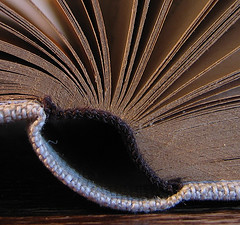Blending fiction and reality, art and history, this series of super-impositions takes the ‘then-and-now’ imagery all the back to the 18th Century to the streets and rivers of England’s capital city. Most of the added classics (spliced with Google Street View shots) are largely unedited, a few are strategically cropped but many show a naturally stark contrast in colours, tones, lighting, and of course: street life.
These hybrids show historical structures in their built environments like ‘St. Martin in the Fields’ painting by William Logsdail in 1888, of a little Victorian girl selling flowers in Trafalgar Square in London. There has been a church on the site for at least 800 years.
And another Logsdail ‘9th of November, 1888’ by William Logsdail of the Lord Mayor’s parade passing through Bank Junction in London. To the left is the Old Bank of England (the building was demolished 50 years after the painting was done). The 9th was also more famous for the crime on the very day of this parade – Mary Kelly’s murder, the last Jack The Ripper’s victims, took place less than a mile away in Whitechapel.
'Blackman Street London' by John Atkinson Grimshaw in 1885. The church is St. George The Martyr, this is the Church next to the notorious Marshalsea prison where Dickens' Little Dorrit is born. The Brough Street Market in Southwark is south of the River Thames and one of the
oldest fruit and vegetable markets. It was an area also famous for its inns, like The George, which still survives. Today, Blackman Street is called Borough High Street and offers a view of the Shard – the biggest spire you'll see looking north-east.
'The River Thames with St. Paul's Cathedral on Lord Mayor's Day' by Canaletto.The Millenium Bridge cuts across this patch of the river now. You still get a great view of St. Pauls dome from the south side of the river but in 1746 - only 40 years since they had finished building it - it must have totally dominated London's skyline. St Paul’s was the city's tallest building for over 300 years. Giovanni
Antonio Canal (known as Canaletto) was a Venetian painter remembered for his renditions of building landscapes in Venice & England.
'The Strand Looking East from Exeter Exchange' by Caleb Robert Stanley.The Strand has changed massively since this painting of St Mary Le Strand. It was half demolished and widened in 1900 removing all the alleyways and narrow residential roads. The church is a replacement for another one demolished to make way for Somerset House. In 1822 all the roads on the right would have still led right down into the Thames before the embankment was constructed. Most of those buildings are gone, but some of the roads remain and retain their slope down towards the old Thames riverbank.
These images are a logical extension of the ‘now & then’ photo concept, and I believe have been improved by imposing the old masters over them.









No comments:
Post a Comment